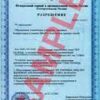Sale!
Seismic Stability Certificate ( Seismic Resistance) 9 Points
Original price was: ₹200,000.00.₹150,100.00Current price is: ₹150,100.00.
A Seismic Stability Certificate, also known as a Seismic Resistance Certificate, is a document that confirms a building or structure’s ability to withstand seismic activities or earthquakes. This certificate is crucial for ensuring public safety and the structural integrity of buildings in earthquake-prone regions. Here are nine key points that are typically included or considered when evaluating seismic stability:
1. **Site Investigation**:
– Detailed geological and geotechnical investigations are conducted to understand the soil conditions and seismic hazards specific to the site.
2. **Building Design and Construction**:
– The building’s design and construction methods should comply with the local building codes and seismic design standards to ensure it can withstand seismic forces.
3. **Material Selection**:
– High-quality construction materials that offer good seismic resistance, such as reinforced concrete, steel, and seismic-resistant construction techniques, are used.
4. **Structural System**:
– The building’s structural system, including its foundation, framing, and connections, should be designed to distribute seismic forces efficiently and ensure stability during earthquakes.
5. **Seismic Design Parameters**:
– The building is designed based on the seismic design parameters, which include ground motion characteristics, seismic hazard levels, and response spectra.
6. **Dynamic Analysis**:
– Dynamic analysis methods, like the response spectrum analysis or time-history analysis, are used to evaluate the building’s response to seismic forces.
7. **Seismic Retrofitting**:
– For existing buildings, seismic retrofitting measures may be recommended or required to improve their seismic resistance and bring them up to current seismic safety standards.
8. **Quality Control and Inspection**:
– Regular inspections and quality control measures are carried out during construction to ensure that the building is being constructed according to the approved seismic design and standards.
9. **Certification and Compliance**:
– After the building is completed and inspected, a Seismic Stability Certificate is issued by qualified engineers or authorities confirming that the building meets the required seismic resistance standards and is safe for occupancy.
It’s essential to consult with qualified structural engineers and seismic experts when obtaining a Seismic Stability Certificate to ensure that all necessary considerations and evaluations are adequately addressed for the specific building or structure.












Reviews
There are no reviews yet.